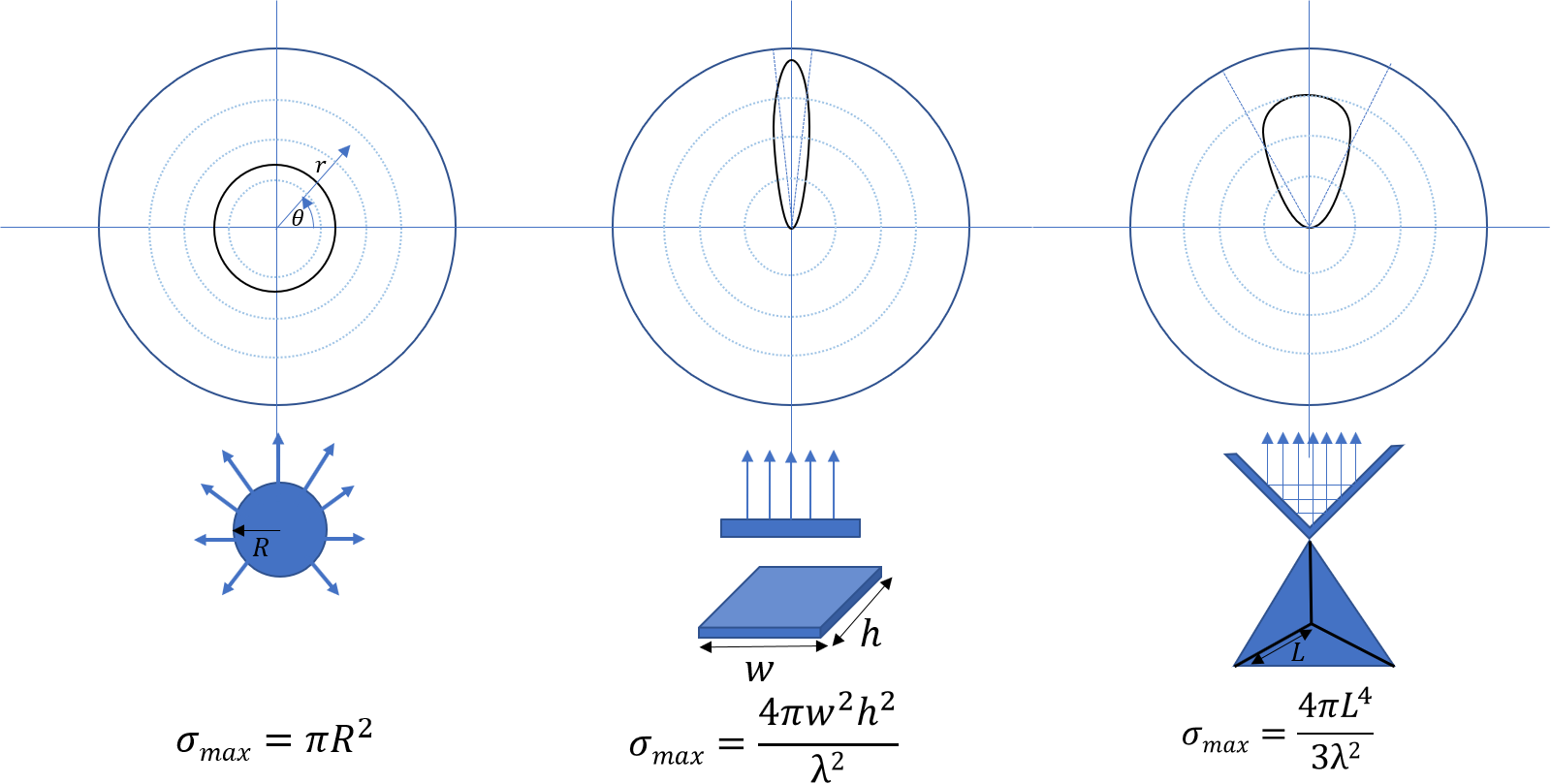Radar Principles#
Reflectivity#
The amount of energy received back to the Rx antenna depends on the reflectivity of the object (\(\gamma\)), the radar cross section (RCS) of the object (\(\sigma\)), and the distance to the object (\(R\)). A reflection occurs when there is a difference in relative permittivity between two media that the signal is propagating through. \(\gamma\) is then given as
where \(\varepsilon_1\) and \(\varepsilon_2\) is the relative permittivity, at 60 GHz, on either side of the boundary. Keep in mind that the relative permittivity is generally frequency dependent and may also vary depending on the exact material composition and manufacturing process. Table 1 lists approximate values for the real part of the relative permittivity for some common materials.
Material |
Re(\(\varepsilon\)) at 60 GHz |
\(\gamma\) with air boundary |
|---|---|---|
Air |
1 |
0 |
ABS |
2.5-4.0 |
0.05 - 0.11 |
Polyethylene (PE) |
2.3 |
0.042 |
Polypropylene (PP) |
2.2 |
0.038 |
Polycarbonate |
2.75 |
0.06 |
Mobile phone glass |
6.9 |
0.2 |
Plaster |
2.7 |
0.059 |
Concrete |
4 |
0.11 |
Wood |
2.4 |
0.046 |
Textile |
2 |
0.029 |
Metal |
– |
1 |
Human skin |
8 |
0.22 |
Water |
11.1 |
0.28 |
Table 1 shows that some materials are semi-transparent to 60 GHz signals and it is hence possible to detect reflecting objects behind a surface of these materials, each boundary with a change in permittivity gives a reflection. This is a useful property in applications where the sensor measures through the product housing or when detecting objects behind other objects such as walls and clothing. For optimal design of the product housing, (see Radome and mechanical design).
Radar Cross Section#
The radar cross section is the effective area of the object that the signal is reflected against, for simple geometrical shapes, where the size is larger than the wavelength of the signal (~5 mm) and is in the far-field distance, it can be expressed analytically as in Figure 2. The far-field distance depends on the object size and its distance to the radar source. Generally speaking, far-field applies when the waves reflected by the object can be considered plane-waves. Representative back scattering pattern of a sphere, flat plate and trihedral corner reflector are shown in the polar plots. It is seen that the objects can have different maximum RCS, but also different radiation patterns, a flat plate for instance is very directive and if tilted away from the radar, the received energy will be decreased, whereas the corner has less angular dependence and is a more robust reflector in terms of angle with respect to the radar.

Figure 2 Radiation pattern and analytical expressions for simple geometrical shapes.#
For most objects it is not possible to analytically calculate \(\sigma\), instead it needs to be measured or modeled.